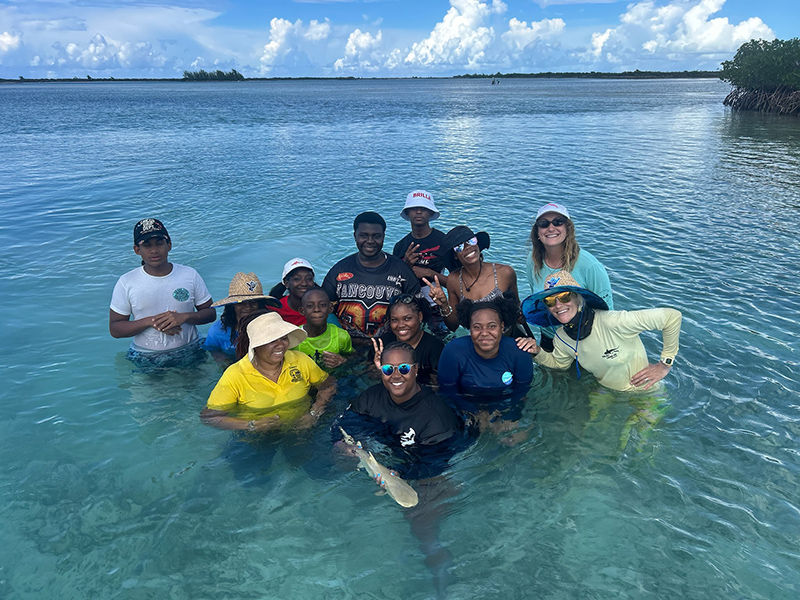September Elasmobranch of the Month: Zebra Shark
- Sharks4Kids

- Sep 10, 2020
- 3 min read
Updated: Sep 12, 2020
Zebra Shark
Stegostoma fasciatum
Key Features/Appearance
The adult zebra shark’s body coloring is yellowish-brown with black spots. Young Zebra sharks are darker in color with black and white stripes, as well as white spots. The head is broad and rounded with two small barbels on the underside, between its nostrils and its small mouth. Its eyes are small and the spiracles are of equal size. The body shape is cylindrical with 5 distinct ridges on its top side. One down the middle and two on either side of its body. These ridges are absent in juveniles. The dorsal fins are close together, with the first dorsal fin noticeably larger than the second. The caudal (tail) fin is approximately as long as the shark’s body with only a long upper lobe. The pectoral fins are large, broad, and rounded. The teeth of the Zebra shark are small tricuspids, with the central cusp longer than the cusps on either side. The longest Zebra shark on record was just over 3.5 m (11 ft). Their average size is 2.5 m (8 ft).

Habitat and Distribution
This shark species is a bottom dweller, spending its time on sandy bottoms, rocks and coral reefs. It is generally found inshore in tropical and subtropical waters, ranging in depths from 0-64 m (0-210 ft). Its distribution is limited to the Indo-West Pacific Ocean. This area covers many countries including, Australia, East Africa, Japan, Thailand, Palau, India, China, and Indonesia.
Diet
Zebra sharks are nocturnal hunters that feed primarily on crustaceans and mollusks. Their diet also includes, urchins, shrimps, crabs, fish and snakes. They have strong buccal (cheek) muscles, enabling them to suck up their prey. While their short, relatively flat teeth and powerful jaws enable them to crush and grind prey items.
Reproduction
Zebra sharks reproduce by an oviparous method, where the female shark releases egg cases which have been fertilized by the male. The brown to purplish-black colored egg cases have thin fibers used to anchor them to the ocean floor while the pups develop inside. When the pups emerge from their egg cases after roughly 6 months, they are approximately 30 cm (12 in) long. The number of eggs produced at one time in the wild is unknown. In captivity, female Zebra sharks are known to lay eggs for 3 months at a time each year, resulting in up to 80 eggs per year. Zebra sharks can also reproduce asexually, by parthenogenesis, where an unfertilized egg is able to develop.

Zebra Shark Credit: Jake Wilton Photo
Status
The IUCN Red List of Threatened Species currently lists the Zebra shark as Endangered, with a decreasing population trend.
Threats
The Zebra shark is commercially fished for human consumption. The fins are used in shark fin soup, the muscle is eaten fresh or preserved, while the liver is used in vitamins. The sharks are also removed from the ocean for display in aquariums. Natural predators of the Zebra shark are larger fish, including sharks.

References
Aquarium of the Pacific
Florida Museum
Marine Bio
Oceana
The IUCN Red List of Threatened Species
Dudgeon, C.L., Simpfendorfer, C. & Pillans, R.D. 2019. Stegostoma fasciatum (amended version of 2016 assessment). The IUCN Red List of Threatened Species 2019: e.T41878A161303882. https://dx.doi.org/10.2305/IUCN.UK.2019-3.RLTS.T41878A161303882.en. Downloaded on 05 September 2020





















